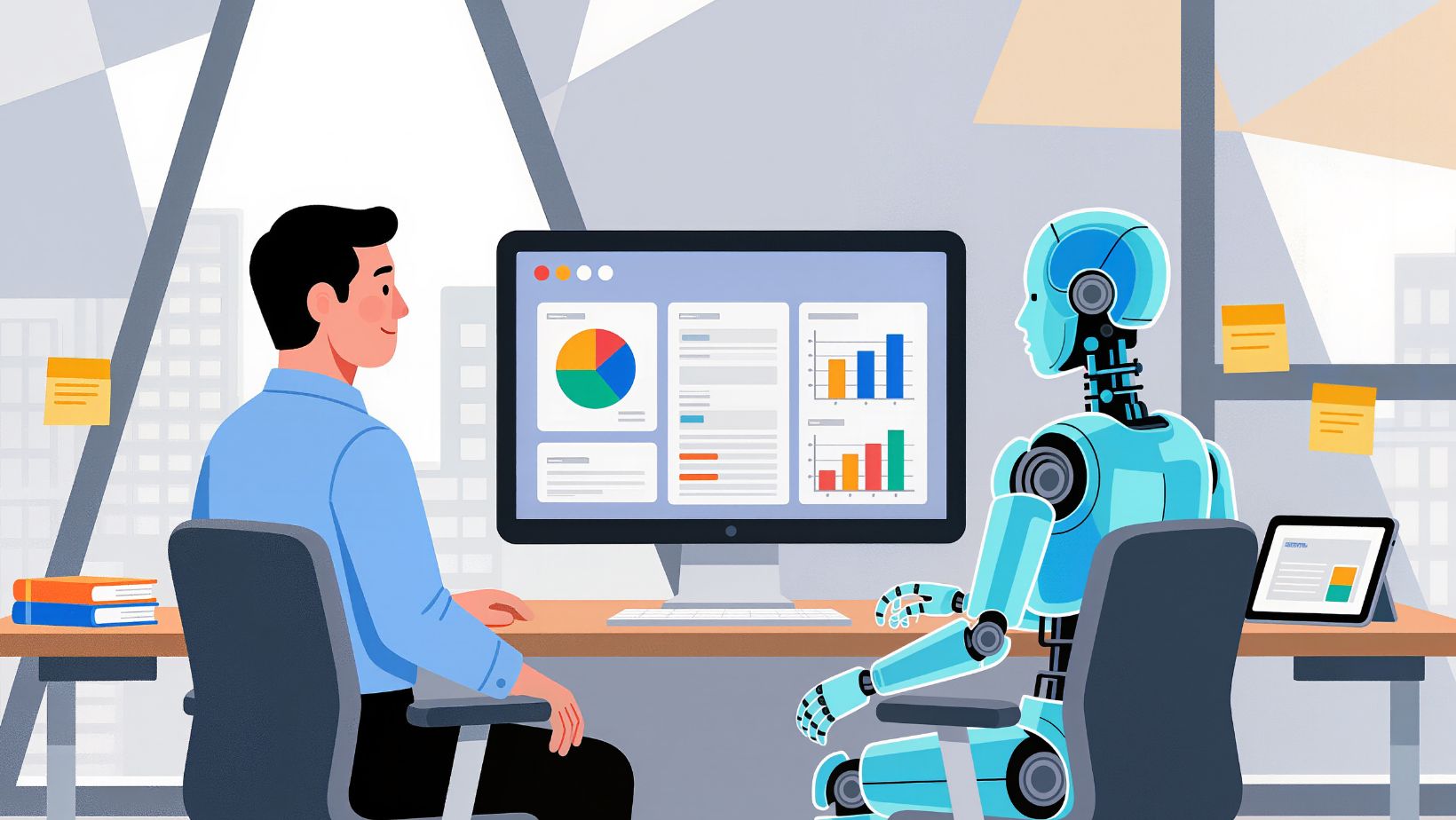You probably don’t notice it happening. That’s the whole point.
The product recommendations that feel eerily perfect. The email that arrives exactly when you were thinking about making a purchase. The ad that shows you something you didn’t even know you wanted, but now you kind of do. The homepage that looks slightly different than it did yesterday, arranged in a way that just makes more sense to you specifically.
None of this is coincidence. It’s AI-driven personalization, working constantly in the background, adjusting your digital experience in thousands of tiny ways you’ll never consciously register. And it’s getting so sophisticated that the line between helpful and unsettling is becoming increasingly difficult to define.
The Invisible Layer
Most people understand that Netflix recommends shows based on what you’ve watched before. That’s obvious, visible personalization. What’s less obvious is everything else that’s being adjusted.
The order of products on an e-commerce homepage. The specific language used in marketing copy. The images selected to show you. The navigation menu items that get emphasized. The timing of promotional emails. The layout of a landing page. The specific features highlighted in a product description. Even the color schemes and design elements can be dynamically adjusted based on what AI predicts will resonate with you.
These aren’t static pages that look the same for everyone anymore. They’re dynamic experiences that shift and morph based on hundreds of data points about you—your browsing history, purchase patterns, demographic information, device type, time of day, location, how you arrived at the site, how quickly you scroll, where your cursor hovers, and countless other signals.
The AI is constantly running experiments on you. Not in a malicious way necessarily, but in an optimization way. It’s testing what works, learning from your responses, and adjusting accordingly. And it’s doing this for millions of people simultaneously, with each person getting a slightly different version of reality.
The Recommendation Engine Economy
Recommendation systems are the most mature form of invisible AI marketing, and they’re everywhere. Amazon’s “customers who bought this also bought” section. Spotify’s Discover Weekly playlist. YouTube’s suggested videos. Instagram’s Explore page. LinkedIn’s “people you may know.”
These systems don’t just look at what you’ve explicitly liked or purchased. They’re analyzing patterns across millions of users to find correlations you’d never spot yourself. They know that people who buy certain combinations of products often buy a third item you haven’t thought of yet. They’ve learned that people who watch certain types of videos at certain times of day respond well to specific types of content next.
The sophistication goes deeper than simple collaborative filtering—”people like you liked this.” Modern recommendation engines incorporate contextual awareness. They know whether you’re browsing on your lunch break or late at night. They know if you’re on your phone or your laptop. They know if you’re clicking through quickly or reading carefully. All of this adjusts what they show you and in what order.
What makes this invisible is that it feels natural. The recommendations seem helpful, not manipulative. You don’t think “an algorithm decided to show me this”—you think “oh, this looks interesting.” The AI has successfully disguised itself as serendipity.
Predictive Personalization
The next level beyond recommendations is prediction—AI systems that anticipate what you want before you explicitly signal it.
E-commerce platforms are getting disturbingly good at this. They analyze your browsing patterns and can predict with reasonable accuracy when you’re approaching a purchase decision. They know how many times people typically visit a product page before buying. They know how long the consideration period usually is for different product categories. They know which types of content consumption indicate serious intent versus casual browsing.
When the AI determines you’re close to purchasing, that’s when the marketing intensity subtly increases. You might see retargeting ads. You might get an email about the product you were viewing. You might see a limited-time discount appear. You might notice the product getting recommended in more places across the site.

None of this feels coordinated to you. It feels like coincidence, or at most like obviously triggered retargeting. What you don’t see is the complex prediction model running in the background that orchestrated all of it based on your specific likelihood to convert.
Dynamic Pricing’s Subtle Cousin
We’ve all heard about dynamic pricing—airlines and hotels adjusting prices based on demand. But there’s a subtler form of personalization happening around pricing and promotions.
Not necessarily showing different prices to different people (though that happens and creates justified outrage when discovered), but showing different promotional messaging. Some people see “free shipping” emphasized. Others see “20% off” highlighted. Still others see “buy now, pay later” options featured prominently.
The AI has learned that different value propositions resonate with different customer segments, and it’s serving each person the message most likely to drive their specific purchase. You think you’re seeing the promotion because it’s currently running. Actually, you’re seeing that specific promotion, in that specific format, because an algorithm predicted it would work on you.
The Personalized Journey
Perhaps the most invisible personalization happens at the journey level. The path you take through a website or app isn’t random—it’s being gently guided.
Search results get personalized, so two people searching the same term see different results in different orders. Navigation menus adjust to emphasize categories the AI thinks you’re most interested in. Email sequences branch based on what you click or don’t click, with each person receiving a customized series of messages.
The website learns how you prefer to shop. If you typically read reviews before purchasing, it might surface reviews more prominently. If you respond well to video content, you’ll see more videos. If you always check shipping information before adding to cart, that information starts appearing earlier in your experience.
This creates a subtle form of confirmation bias. The site is learning what works for you and then giving you more of it, which reinforces that behavior, which makes the AI more confident in its predictions, which leads to even more personalization. You’re being gently funneled into a customized bubble.
The Data Behind the Curtain
All of this invisible personalization requires enormous amounts of data. Not just what you consciously provide—your name, email, shipping address—but behavioral data generated constantly as you interact with digital properties.
Every page view, click, hover, scroll, pause, exit, and return generates data. The AI tracks how long you spend on different types of content. It monitors your reading speed. It knows if you’re a skimmer or a careful reader. It tracks whether you comparison shop or impulse buy. It knows if you abandon carts frequently or almost always complete purchases once you start.
This data gets aggregated, analyzed, and fed into machine learning models that predict what you’re likely to do next and what might influence those future actions. The models are constantly being refined based on whether their predictions proved accurate.
Most people have no idea how much data is being collected about their behavior, or how it’s being used to personalize their experience. It happens entirely behind the scenes, invisible unless you go looking for it.
When Invisible Becomes Creepy
There’s a fine line between helpful personalization and privacy-invading creepiness. That line gets crossed when the AI knows things about you that you didn’t explicitly share and uses that knowledge in ways that feel invasive.
The classic example is the Target pregnancy prediction story from years ago—their algorithm predicting a teenager was pregnant before her family knew, based on changing purchase patterns. That’s not invisible marketing; that’s visible evidence of invisible tracking, and it makes people uncomfortable.
More commonly, the creepy factor hits when personalization is too accurate. When an ad shows you something you were just thinking about but hadn’t searched for yet. When a recommendation is so spot-on that it feels like someone was reading your mind. When the timing is so perfect that it can’t possibly be coincidence.
These moments pull back the curtain and reveal the machinery underneath. They make people aware that they’re being tracked, analyzed, and marketed to in sophisticated ways they didn’t fully understand. And that awareness often generates backlash.
The Ethics of Invisible Optimization
There’s a genuine ethical question here about informed consent. If people don’t realize the extent to which their digital experiences are being personalized based on behavioral analysis, can they meaningfully consent to it?
The privacy policies and terms of service technically cover all of this, but let’s be honest—nobody reads them, and they’re deliberately written to be vague enough to cover almost anything. “We personalize your experience” doesn’t convey the reality of constant behavioral tracking and AI-driven manipulation of what you see and when.
There’s also the question of manipulation versus service. When does helping people find products they’re likely to want become exploiting psychological vulnerabilities to drive sales? When does personalization become a filter bubble that limits what people are exposed to? When does prediction become unwanted surveillance?
The Future of Invisible Marketing
This is only going to get more sophisticated. As AI capabilities such as Blaze marketing tools improve, personalization will become even more subtle and even more effective. We’re moving toward truly individualized experiences where no two people see the same version of a website, app, or marketing campaign.
The invisibility is the feature, not a bug. The most effective personalization is the kind you never notice happening. The kind that feels natural, helpful, and serendipitous rather than algorithmic and commercial.
Whether that’s a good thing or a deeply concerning thing probably depends on your perspective—and whether you’re the marketer or the marketed to.
